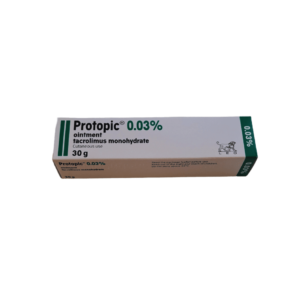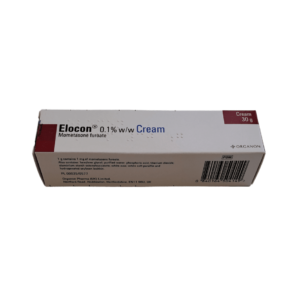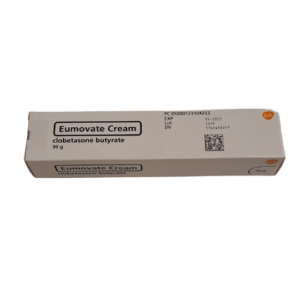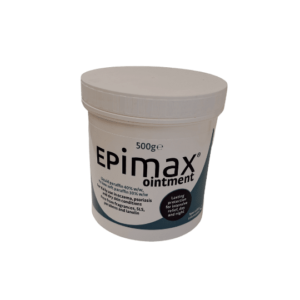Eczema, also known as atopic dermatitis, is often mistaken for “just dry skin.” While dryness is a symptom, eczema is actually a complex inflammatory skin condition involving immune response, genetics, and environmental triggers. Misunderstanding eczema leads many people to under-treat it, relying solely on moisturisers when more targeted treatment is often required. In this blog, we address key misconceptions, explore the science behind eczema, and guide you to effective pharmacy treatments available across the UK.
Many assume eczema is simply due to dry skin, but this view overlooks the complexity of the condition. Eczema is fundamentally an inflammatory disorder of the skin barrier, driven by an overactive immune response. This inflammation can be triggered by allergens, environmental irritants, stress, temperature fluctuations, or even minor skin trauma. As a result, eczema presents with redness, intense itching, cracked skin, and sometimes oozing lesions.
Moisturising alone may relieve some symptoms temporarily by adding surface hydration, but it does not address the root cause – inflammation. Without proper intervention, the skin can become increasingly vulnerable to flare-ups and secondary infections.
To manage eczema effectively, both hydration and inflammation control are needed. The right balance of emollients and anti-inflammatory treatments helps to restore the skin barrier and reduce immune overreaction.
Pharmacist-recommended treatments include:
Hydrocortisone 1% Cream – suitable for treating mild inflammatory episodes and itching.
Eumovate Cream (Clobetasone Butyrate) – for more persistent or severe patches requiring stronger anti-inflammatory support.
Doublebase Gel – an emollient that both hydrates and soothes, ideal for daily barrier maintenance.
False. Eczema is an inflammatory immune-mediated disease, not simply dry skin. While dryness is one visible symptom, effective treatment requires managing inflammation, itch, barrier repair, and avoiding triggers. Moisturiser alone isn’t sufficient during flares.
Incorrect. Eczema can persist into adulthood or begin later in life.
Many people wrongly believe eczema is a childhood condition that is “grown out of.” In truth, adults can develop eczema, and those who had it as children may experience flare-ups later in life. There are even forms of adult-onset eczema.
Not true. You cannot catch eczema; it is not caused by infection.
Eczema is not caused by bacteria, viruses or fungi. It’s a non-infectious condition, meaning it cannot be spread from person to person. This misunderstanding often leads to unnecessary stigma.
Steroids used correctly and short-term under pharmacy guidance are safe and effective.
Topical steroids (like hydrocortisone or clobetasone) are frequently misunderstood. Used properly—i.e. short-term, thin application, correct strength—they are safe and effective. Skin thinning is associated with long-term misuse, not standard pharmacy-guided use.
Moisturisers, or emollients, are essential in eczema management because they help maintain the skin barrier and lock in hydration. However, relying solely on moisturisers is a common and critical mistake, especially during active flares. Eczema is not just a problem of dryness; it is an inflammatory skin disorder. During flares, the skin experiences heightened immune activity, leading to redness, itching, and irritation that moisturisers alone cannot calm.
Think of emollients as your daily maintenance strategy—they reduce flare frequency, soothe the skin, and help prevent triggers from penetrating the skin barrier. However, once inflammation begins, emollients cannot resolve it. This is where topical corticosteroids or other anti-inflammatory treatments become essential. These medicines actively reduce the immune response in the skin, calming down symptoms and preventing progression.
Neglecting to use anti-inflammatory products when needed can lead to worsening eczema, potential infections, and long-term damage to the skin barrier.
Best practice: Continue applying emollients alongside treatment creams, never stop moisturising, and increase application frequency during cold, dry weather or post-washing.
Recommended pharmacy products include:
Eczema flare-ups often follow a predictable cycle, which if not interrupted, can spiral into severe discomfort and skin damage. Understanding this cycle is essential for timely and effective intervention:
Trigger exposure – This could be cold weather, allergens (like dust mites or pollen), soaps, fabrics, stress, or sweating.
Itching – A hallmark symptom of eczema, leading to the urge to scratch.
Scratching – Damages the skin barrier, introduces bacteria, and worsens irritation.
Skin damage – Leads to cracks, inflammation, and a compromised barrier.
Inflammation and flare-up – The skin becomes red, swollen, possibly weeping or infected, requiring active treatment.
Breaking this cycle requires a multi-step approach:
Identify and minimise triggers: Keep a flare diary and avoid known irritants like scented products or wool.
Use emollients consistently: Apply liberally at least twice daily, even when symptoms are mild.
Apply anti-inflammatory creams early: Don’t wait for the flare to become severe—begin treatment at the first signs of redness or itching.
Consider bath additives: These hydrate and soothe without the irritation of some soaps.
Recommended preventive treatment:
Oilatum Bath Formula – ideal for daily use to lock in moisture and reduce itchiness after bathing.
Dermol 500 Lotion – suitable as a soap substitute that also provides antimicrobial protection.
By recognising the early stages of the flare cycle and intervening with the correct treatments, you can significantly reduce the intensity and frequency of eczema episodes.
Sensitive skin reacts easily to products, weather, and stress, but may not show the persistent inflammation and itching seen in eczema. If your skin frequently breaks out in red patches, becomes itchy, and responds well to steroids, it is more likely eczema.




Topical corticosteroids are a cornerstone of effective eczema treatment, especially during flare-ups. Unfortunately, many people avoid using them due to common misconceptions or fear of side effects. In reality, when used correctly, they are both safe and highly effective in reducing inflammation.
What do steroid creams actually do? Topical steroids reduce redness, itching, and swelling by calming the immune response in the skin. This allows the skin barrier to heal and protects against worsening symptoms or secondary infections.
Are they safe? Yes, when used as directed by a pharmacist or doctor. Low to moderate potency steroids like hydrocortisone or clobetasone are suitable for short-term use and should be applied in a thin layer to affected areas once or twice daily. Skin thinning is only a risk when potent steroids are overused or applied for prolonged periods without supervision.
Steroid Treatment Options by Strength:
Mild:
Hydrocortisone 1% – for face, neck, and sensitive areas
Moderate:
Eumovate (Clobetasone Butyrate) Cream – for moderate eczema on limbs and body
Potent:
Elocon (Mometasone Furoate) – for stubborn or thickened eczema patches (short-term use only)
Steroid-Free Prescription Options:
Some patients prefer or require steroid-free treatments, especially for long-term use or sensitive areas like the face.
Protopic Ointment (Tacrolimus) – a non-steroidal immunomodulator for moderate to severe eczema. Ideal for steroid-sensitive skin or maintenance therapy to prevent flare recurrence.
✅ Best Practices for Safe and Effective Use:
Use the right strength based on severity and body area
Apply only to affected skin in a thin layer
Limit duration (typically 7–14 days) unless advised otherwise
Pair with emollients like Dermol 500 or Adex Gel
Taper or step down to milder products during recovery
Important: Don’t stop steroids too early—this can cause rebound flares. Continue the full recommended course, and use steroid-sparing agents like Protopic for long-term management if needed.
Let me know if you’d like this reflected in your full document or accompanied by a product comparison chart.
Some natural options like oat baths, aloe vera, or coconut oil may help soothe symptoms, but they are not substitutes for medically-proven treatments. Always patch-test natural products and continue using emollients and steroids if prescribed.
Overwashing with harsh soaps
Avoiding steroids out of fear
Using perfumed moisturisers
Stopping treatment too early
Relying on natural remedies alone
Eczema is more than dry skin. It requires a full understanding of your condition, consistent skincare, and timely treatment of flares. Shop trusted eczema treatments online at OnlineChemist with nationwide UK delivery.
Authored by:

BPharm, MPharm, PGDip (Pharmacy), MRPharmS, IP
Pharmacist Independent Prescriber
GPhC Number: 2083409

Online Chemist
82 Middleton Road
Gorleston
Great Yarmouth
Norfolk, NR31 7AH
Phone: 01493 600610
Email: info@onlinechemistuk.net
Superintendent Pharmacist:
Obaidullah Zaman
BPharm, MPharm, PGDip (Pharmacy), MRPharmS, IP
GPhC Reg. Number: 2083409
Pharmacy Premises GPhC Reg. Number: 9011159
Monday 09:00 – 17:00
Tuesday 09:00 – 17:00
Wednesday 09:00 – 17:00
Thursday 09:00 – 17:00
Friday 09:00 – 17:00
Saturday Closed
Sunday Closed
Click here for driving directions
OnlineChemist is a trading name of Nomaz Limited.
Registered in England – 11349276.
© 2025 All rights reserved.